Welcome to I Can Work! The I Can Work! program is a five-module course designed to integrate communication skills with hands-on prevocational training in the areas of job readiness, clerical, retail, food service, and the grocery industry.
The I Can Work! Program was created by Angela Mahoney. I Can Work! serves to introduce and educate young adults with special needs and who are interested in working in their community. This program is geared toward middle school and high school students. Additionally, this program can support recent graduates ages twenty-one through twenty-five who are transitioning from school to the workplace.
Now let’s get filing! In Module 2: Clerical, students are introduced to a variety of tasks related to the clerical field, filing being one of them. In addition to the filing tasks presented in the program, student can practice filing in many other ways to keep the learning of the task fun, interesting and engaging.
To challenge a student who is showing success with filing by letter, have them file by two letters at a time. I encourage using words that are school and work place related.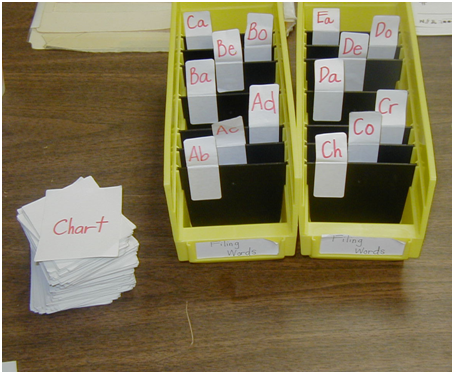
Traditionally when filing, students use a small bin with tabs to organize what is being filed. For certain students, it is more effective and beneficial for them to use a large box grid labeled according to what needs to be filed.
Why not use the resources you have and create cards to file using stickers! Cards can be filed by same picture, pattern or colors to list a few. The options are unlimited and a fun change of pace for the students as well.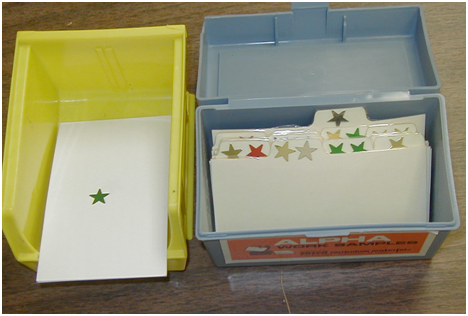
If you find letters or numbers are challenging for students, use color index cards. Not only does this task build on the skill of filing, but also reinforces color recognition.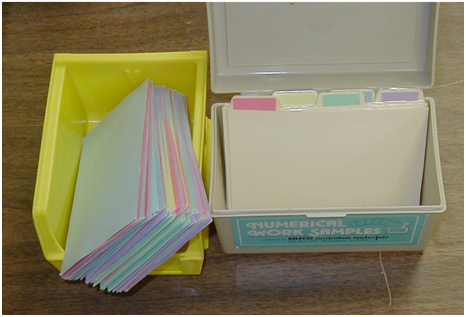
Many students use picture supports throughout their day to support schedules as well as communication, just to name a few. Why not use those pictures as a filing task? Create dividers for each picture choice and have the student work on filing each picture in the correct section.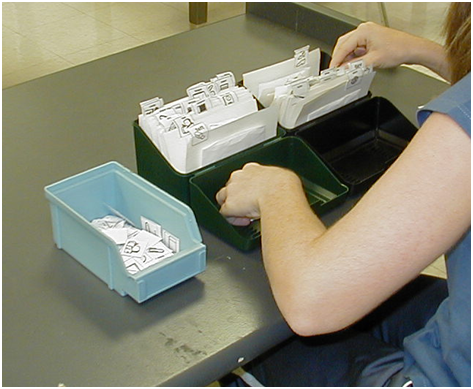
To learn more please visit the I Can Work! website!
* * *
Guest Blogger: Angela Mahoney
Angela Mahoney, creator of the I Can Work! Program, currently works as special education case manager at Middle School in Danbury, Connecticut. She has worked with students of all ages in a variety of settings for the past thirteen years. Her career includes a private school where she worked with over seventy-five middle school and high school-aged students on a weekly basis, running an inclusion-based elementary program for students with autism, as well as co-teaching core academic classes as part of a team comprised of fellow middle school educators.
To learn more or to purchase the I Can Work! Program, visit icanwork.therapro.com

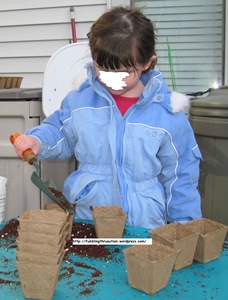 Many children love to snuggle up in heavy and/or tight blankets. Weighted vests, toy animals, collars and other products increase body awareness and also have a calming affect. Gross motor activities (such as wrapping up inside a blanket while rolling across a mat, or rolling across cushions and pillows) combine heavy pressure and vestibular movement stimulation. This helps children interpret how their bodies are moving.
Many children love to snuggle up in heavy and/or tight blankets. Weighted vests, toy animals, collars and other products increase body awareness and also have a calming affect. Gross motor activities (such as wrapping up inside a blanket while rolling across a mat, or rolling across cushions and pillows) combine heavy pressure and vestibular movement stimulation. This helps children interpret how their bodies are moving.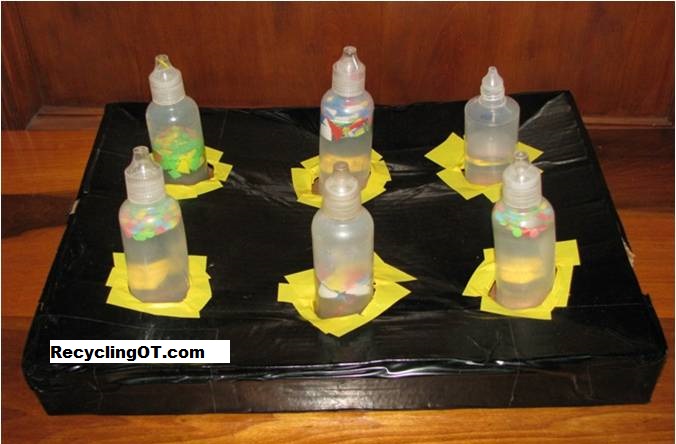
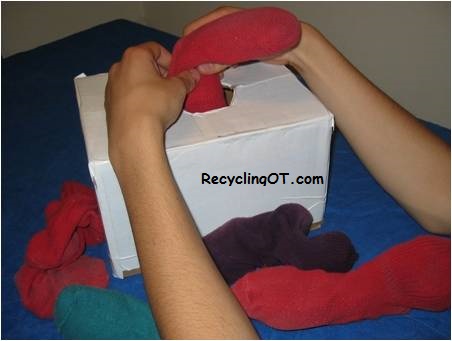 Filling socks or tights with sand creates “Sensory Socks.” (To increase length, you may sew several small socks together. To prevent sand leakage, place the sand in a plastic bag before placing inside the sock.)
Filling socks or tights with sand creates “Sensory Socks.” (To increase length, you may sew several small socks together. To prevent sand leakage, place the sand in a plastic bag before placing inside the sock.)
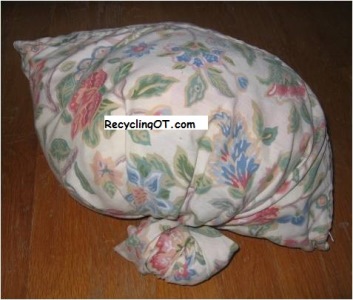 Possible homemade adaptations include adding sand to stacking boxes and tossing/catching a “sensory pillow.” This pillow case filled with foam and small bags of sand is easy to grasp, fun to hug and won’t roll away.
Possible homemade adaptations include adding sand to stacking boxes and tossing/catching a “sensory pillow.” This pillow case filled with foam and small bags of sand is easy to grasp, fun to hug and won’t roll away.